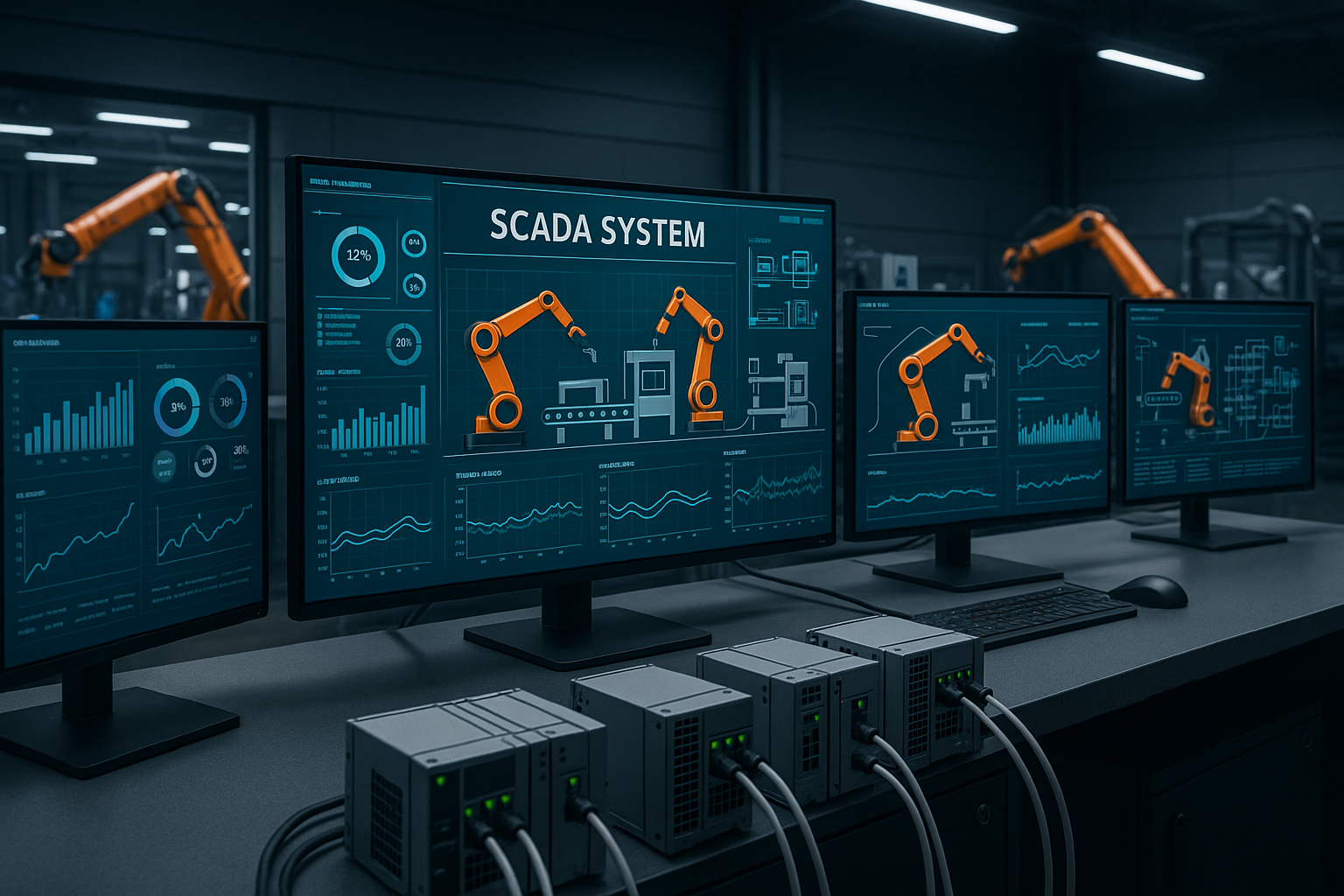Introduction: The Unsung Heroes of Automation
When we picture factories, energy plants, or water treatment facilities, we might imagine machines doing all the work. But what’s in charge behind the scenes? That’s where SCADA systems and PLCs step in. These technologies control and keep an eye on complex industrial operations—making everything run more more , and more .
What is a PLC and Why Does It Matter?
A PLC, or Programmable Logic Controller works as the brain of a specific machine or system. It’s a sturdy little computer built to endure in rough environments—think hot factories or dusty warehouses.
What Job Does a PLC Perform?
PLCs collect information from sensors (such as temperature or pressure readings) and use this data to control machines—for example, starting a motor or opening a valve. They follow a set of instructions (a program) and respond in real time to changes. They’re quick, dependable, and ideal for controlling machines that need speedy reactions.
What is SCADA and How Does It Help?
SCADA means Supervisory Control and Data Acquisition. It might sound complicated, but it’s just a system that allows people to keep an eye on and manage industrial operations from a single location—often using a computer screen.
What SCADA Can Do:
- Watch everything: It displays real-time information such as machine speeds, tank levels, and temperatures.
- Control machines: Workers can switch devices on or off or adjust settings .
- Store and analyze data: It maintains a record of past events to troubleshoot and check performance.
SCADA provides employees with a comprehensive overview of all activities in the plant or facility.
How SCADA and PLCs Work Together
PLCs act like capable workers doing their tasks in various sections of a factory. SCADA serves as the intelligent overseer monitoring everything. The PLCs gather information and manage equipment, while SCADA collects that data from all the PLCs and displays it on a single easy-to-read screen. Should an issue arise, the SCADA system can notify an operator, who then sends an instruction, and the PLC executes it.
Why This Pairing Works So Well
- Speed and Accuracy: PLCs have an almost instant reaction to changes.
- Better Oversight: SCADA gives you a view of what’s going on across the entire system.
- Safety Boost: You can spot and fix issues .
- Remote Control: You can make changes without always being there in person.
- Smarter Decisions: The system keeps records to help with analysis and maintenance.
Everyday Examples of SCADA and PLCs
- Factories: They control and keep track of machines on the production line.
- Energy Plants: They watch power output and adjust equipment when needed.
- Water Systems: They monitor water levels and treatment processes.
